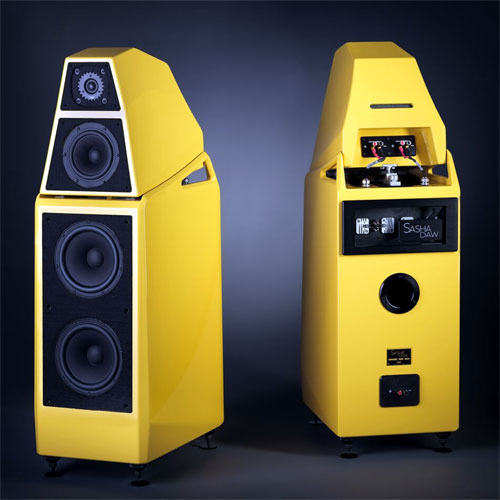A Tribute to David Wilson: The Sasha DAW
avid Wilson, who passed away earlier this year, designed his original WATT loudspeaker in 1985 as a location monitor for use on his own recording projects. He later added a separate woofer cabinet designed for use with the WATT, and in the process he created a new loudspeaker platform: two cabinets, one for the midrange/treble and one for the bass, along with a sloped baffle to maintain time alignment. Wilson Audio's new Sasha DAW ($37,900 per pair) pays tribute to David Wilson's achievement, while also being a thorough revision of the pioneering WATT/Puppy platform. Its upper module uses thicker panels than its predecessor in order to reduce resonance, and a new pattern cut into the inside of the enclosure mitigates internal reflections. The upper module's internal volume was increased by 10.2% for increased dynamic range and efficiency. The midrange and tweeter are the same drivers used in the WAMM Master Chronosonic, an all-new crossover blending their output. Housing a pair of new 8" woofers based on the Alexia Series 2's driver, the Sasha DAW’s bass enclosure is milled from thicker X-material panels to reduce resonances further. The enclosure's volume was increased by 13.3%, which allows for greater bottom-octave authority and reduced distortion. The blades on the top of the module have new openings that reduce cavity pressure in the space between the upper and lower modules. Finally, a new ultra-low-turbulence port reduces unwanted noise. There's more. New binding post are easier to tighten by
hand, and they also allow banana-plug connection. Wilson Audio has enhanced the user
interface of the speaker's group-delay mechanism, which now features a knurled knob that
enables adjustment without tools. Additionally, the woofer baffle is now angled back,
which more correctly integrates the bass cabinet with the upper module in the time domain.
The rear cover plate is now removable without the aid of tools, providing easy access to
the resistors that provide protection for the drivers and enable the fine-tuning of their
blending. Finally, a tempered-glass cover is elegantly integrated into the plate, giving a
view of the resistors. |



